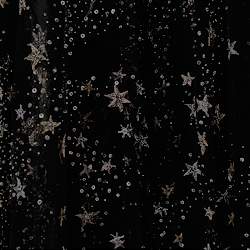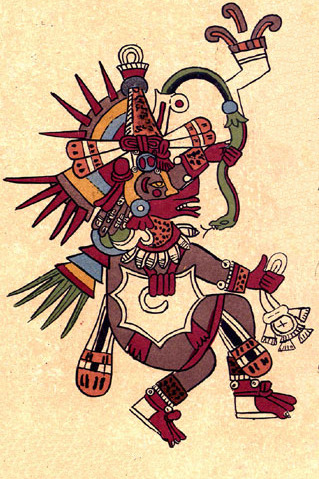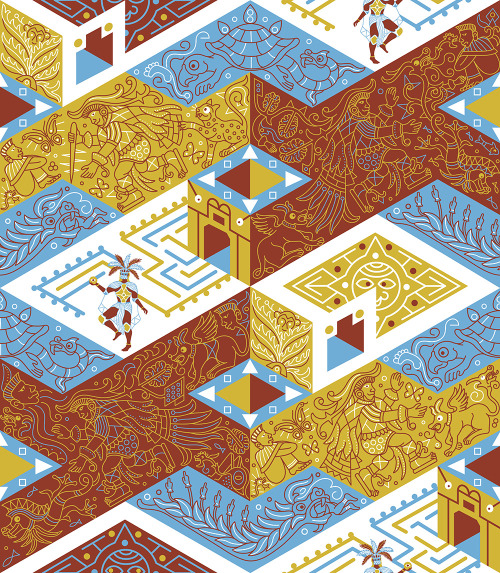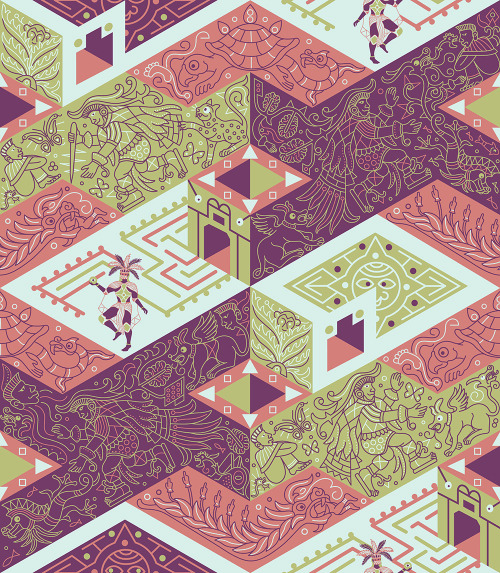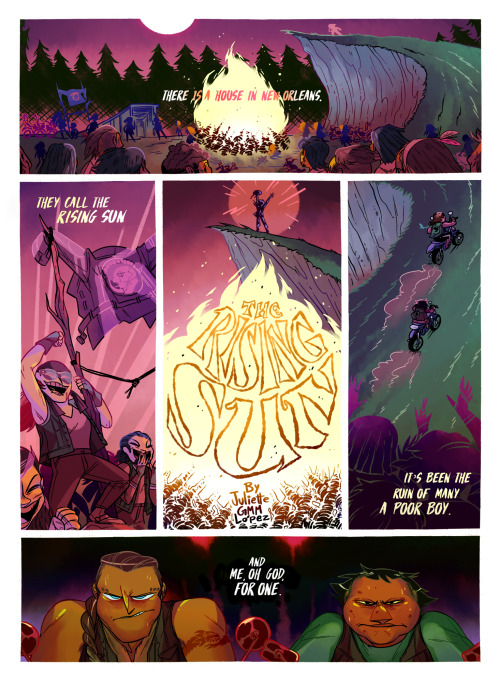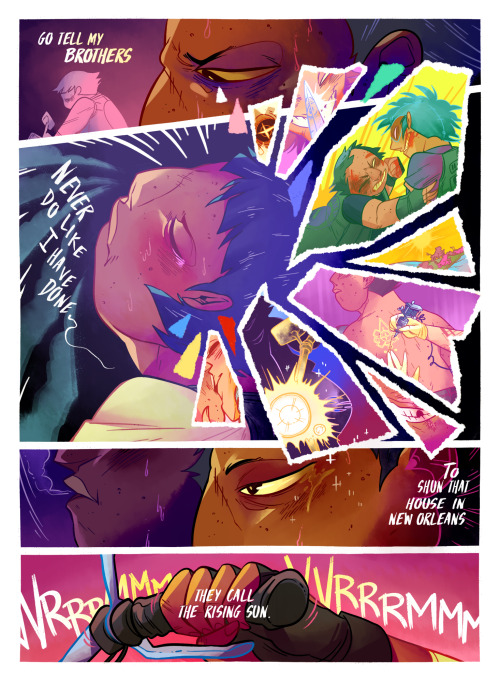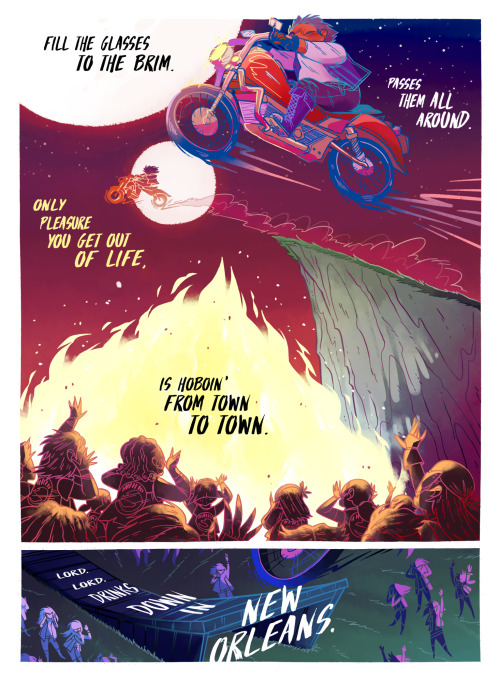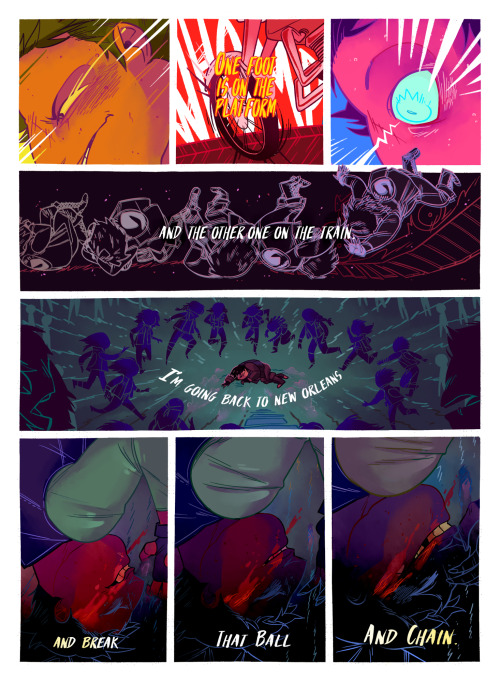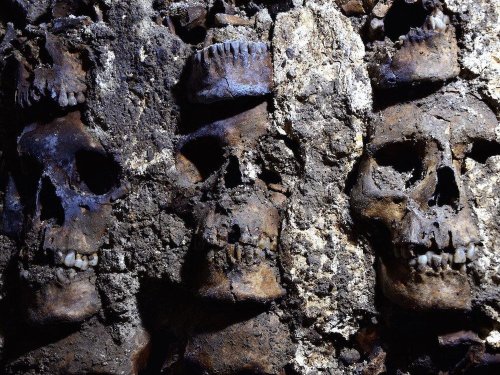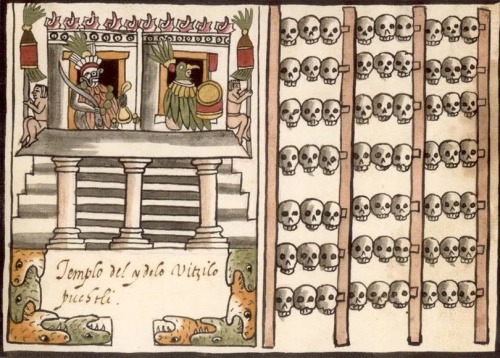#aztec gods
aztec mythology series ➝ coyolxauhqui
Coyolxauhqui was the moon goddess according to Aztec mythology. She was the daughter of the Earth goddess, Coatlicue and the sister of the sun god, Huitzilopochtli.
“Coyolxauhqui, upon learning that her mother was pregnant from an unknown father, encouraged her four hundred sisters and brothers to kill her in order to amend the dishonor. When they arrived, Coatlicue gave birth to Huitzilopochtli, who sprang out of his mother as an adult fully armed and saved her.
In the end, Coatlicue regretted such violence. Thus, after cutting off Coyolxauhqui’s limbs, Huitzilopochtli tossed her head into the sky where it became the moon, so that his mother would be comforted in seeing her daughter in the sky every night.”
Post link
The Aztec religion, polytheistic and based on nature incorporated the main god of tribes they conquered. This, however, gave them such a large amount of gods that it became impossible to worship them all. Which led to the formation of separate cults which worshiped one god supreme and others as minor gods. This can be compared loosely to the many separate branches of Christianity such as Protestant, Catholic, Lutheran, or in particular, to Catholicism and the Saints.
Aztec legend of the creation of mankind and the origins of the Aztec tribe tie directly into reasons for human sacrifice. The main points in these legends is that the gods sacrificed for humans, thus, humans must sacrifice for the gods. Furthermore, the gods depended on humans for the precious liquid chalchihuatl, – human blood to sustain themselves. In Catholicism Christ was crucified to pay for human sins, in turn, Catholics sacrifice during lent, but also throughout the year. There is a close parallel between the Aztec gods need for blood and Catholic communion: the Catholic priest who is the representative of god is always the first one to drink the communion wine, the symbol of blood.
Another parallel is the legend of the creation of the Aztec tribe and the creation of the god Huitzilopochtli, one of the most important Aztec gods.
Huitzilopochtli was conceived spontaneously by a ball of down touching his mother. In Catholicism the Virgin Mary was visited by an angel with feathered wings to tell her that she was to give birth to the Messiah.
Moreover, Huitzilopochtli the god of the sun made the Aztec his chosen people in the same manner that the Hebrews where God’s chosen people in Judaism. Since Christ the Messiah was Jewish, the followers of Christ became the chosen people of god. Another very similar characteristic between the two religions is the fact that they both had saviors. Jesus Christ came to earth to teach humans religion and proper behavior; the god Quetzalcoatl also came to teach people this. They both said that they would come again.
The Aztecs view of death was similar to the Christian view. They believed that there was a hell called Mictlán and a Heaven called Tlalocán. Mictlán was ruled by the god Mictlatecuhtli and Tlalocán was ruled by Tlaloc the rain god and Huitzilopochtli the warrior god in the same manner that Satan rules hell and Jesus and God rule heaven.
The world of the dead was composed 9 levels below and 13 levels above the earth. The period in hell was not permanent but considered a 4 year journey, during this time the family of the deceased made many offering and sacrifices to make the journey easier. The remnants of this Aztec belief is the present day Mexican celebration of Día De Los Muertos where people set up altars for the deceased and make food offering. In preparation for De Los Muertos candy skeletons and skeleton bread are sold throughout Mexico, this has grounds in the fact that Mictlatecuhtli the Aztec god of the dead was a skeleton.
The Aztecs’ belief in how to arrive in heaven are very different from most main stream religions. They believe that entrance to heaven is based on the amount of suffering during life. For instance a new born baby would go to hell for he had not suffered enough during life. In Catholicism a baby would go to limbo if not baptized prior to death for Baptism in the catholic faith is the washing away of original sin. Limbo is a midway point between heaven, hell and earth.
But if a baby is baptized before death, he is immediately guaranteed entrance in heaven. The people who had suffered such as warriors, sacrificial victims, mothers who died giving birth and slaves were to enter heaven, just like good people do in the Catholic religion. Furthermore, stealing was considered bad as where most things looked upon as sins in Catholicism. The Aztec temples were a place of worship like a church.
The Spanish priests were quick to see these parallels and made use of them. The priests used the already existing religion and made changes. For instance they might change the savior’s name from Quetzalcoatl to Christ they might change the virgin from Coatlicue to Mary and the method of virgin conception from a ball of down to the speaking of a Feathered angel. These changes made it easy for the Aztecs to switch religions. One of the most important factors was that by converting to Catholicism the Aztecs were given the opportunity to place themselves on the social ladder with the Spanish. This means that Mexico started to form a new culture mixed with both the Spanish and Aztec in both blood and ideals.
Post link



Quetzalcoatl, Mictecacihuatl and Tezcatlipoca designs in Onyx Equinox. I loved the show and I hope they get a second season.
There is a house in New Orleans
They call the Rising Sun
And it’s been the ruin of many a poor boy
And God, I know I’m one
this thing only works for individual pieces but let just enjoy one of my comics that I finally was allowed to post a while ago, on full size now “The Rising Sun”
Thismightydimo@ IG-TW-PATREON
On the book version the editor asked for a non lyrics version since we worried about copyrights, but I’m glad it can be now as I wanted to from the start. the anthology theme was to make a mythological story in a new context, I went with the aztec’s fifth sun story. originally I had wanted to use a spanish version of the song, but I was worried people wouldn’t make the connection, so went with the know english on
Personally I based it more on Ge-nesis “La casa donde nace el sol” and Sandro “La casa del sol naciente” versions, you should check them out
Post link

My show at Art Bug Gallery opens in a few days!
In this exhibit you will be able to see my original painting of Ometeotl, which metaphorically represents the Mesoamerican creator divinity. Ometeotl, Dual Lord and Lady, are everything that exists. They are creator and creation, painter and painting, mother/father and son/daughter. They are all which we understand as reality, placed in time and space.In this painting the main Teteo appear intertwined to represent that They are all but faces of Ometeotl, and to remind us that all life is connected through Their love and generosity.
Ometeotl. Aztec Mexican Spirituality Corazon Mexica Mexica | Etsy México







This painting is part of the story of the creation of the Fifth Sun, which is the sun under which we live. The Lord of Snails and Nanahuatzin, the Syphilitic Lord, leapt into the Spirit Fire. The Lord of Snails grew afraid when he felt the extreme heat of the Spirit Fire, and held back. Nanahuatzin, however, fearlessly went forward and leapt into the heart of the Spirit Fire. The Lord of Snails, when he saw this, felt ashamed, and leapt also into the Spirit Fire, but even then, because of his cowardice, he leapt only into its coals and ashes, where he too was consumed by the fire. In honor of the sacrifices of the two Teteo, the jaguar and the eagle leapt over the flame, thereby proving their bravery and acquiring their stripes and spots from the smoky ashes of the fire. The sacrificed Teteo arose in the East as two great suns. The gathered Teteo threw a rabbit in the face of the Lord of Snails, thus dimming his brilliance and transforming him into the Moon.
This painting will be on display at Art Bug Gallery! You can also find it as a print in my Etsy store! Click here!






The Underworld is a place of cold and darkness, which the spirits of the dead travel in order to be reborn. However, it is also a place of fertility, where new life is created from dead beings. Most of the animals of the Land of the Fleshless are swimming or flying beings, which connect this place with the Earth and act as messengers between the dead and the living.
You can see different animals of the fertile Underworld in my painting The Death in Mictlan of Quetzalcoatl. Click here for prints in my Etsy store!



Tonatiuh is Our Lord the Sun. His name means You Are Like a Shining, a reference to His role as illuminator and creator of the World. Every morning He defeats the forces of darkness, who seek to conquer the cosmos, and He brings order to the places where chaos reigns. In the evening, however, He is defeated by the creatures of the night, who devour Him, and in death He descends to the Underworld, from which He emerges victorious at sunrise.
One of His nahualtin or spirit animals is the deer, which, like the Sun, jumps all over the sky.
This painting of Tonatiuh is part of the art of the Tarot Yohualli Ehecatl. You can find Him as a print in my Etsy store!
Aztecs Constructed Tower Made Out of Hundreds of Human Skulls Discovered
Researchers in Mexico City recently discovered a new section of a macabre late 15th-century structure.
Archaeologists excavating a famed Aztec “tower of skulls” in Mexico City have uncovered a new section featuring 119 human skulls. The find brings the total number of skulls featured in the late 15th-century structure, known as Huey Tzompantli, to more than 600, reports Hollie Silverman for CNN.
The tower, first discovered five years ago by archaeologists with Mexico’s National Institute of Anthropology and History (INAH), is believed to be one of seven that once stood in the Aztec capital of Tenochtitlán. It’s located near the ruins of the Templo Mayor, a 14th- and 15th-century religious center dedicated to the war god Huitzilopochtli and the rain god Tlaloc.
Found in the eastern section of the tower, the new skulls include at least three children’s craniums. Archaeologists identified the remains based on their size and the development of their teeth. Researchers had previously thought that the skulls in the structure belonged to defeated male warriors, but recent analysis suggests that some belonged to women and children, as Reuters reported in 2017.
“Although we cannot determine how many of these individuals were warriors, perhaps some were captives destined for sacrificial ceremonies,” says archaeologist Barrera Rodríguez in an INAH statement. “We do know that they were all made sacred, that is, they were turned into gifts for the gods or even personifications of the deities themselves, for which they were dressed and treated as such.”
As J. Weston Phippen wrote for the Atlantic in 2017, the Aztecs displayed victims’ skulls in smaller racks around Tenochtitlán before transferring them to the larger Huey Tzompantli structure. Bonded together with lime, the bones were organized into a “large inner-circle that raise[d] and widen[ed] in a succession of rings.”
While the tower may seem grisly to modern eyes, INAH notes that Mesoamericans viewed the ritual sacrifice that produced it as a means of keeping the gods alive and preventing the destruction of the universe.
“This vision, incomprehensible to our belief system, makes the Huey Tzompantli a building of life rather than death,” the statement says.
Archaeologists say the tower—which measures approximately 16.4 feet in diameter—was built in three stages, likely dating to the time of the Tlatoani Ahuízotl government, between 1486 and 1502. Ahuízotl, the eighth king of the Aztecs, led the empire in conquering parts of modern-day Guatemala, as well as areas along the Gulf of Mexico. During his reign, the Aztecs’ territory reached its largest size yet, with Tenochtitlán also growing significantly. Ahuízotl built the great temple of Malinalco, added a new aqueduct to serve the city and instituted a strong bureaucracy. Accounts describe the sacrifice of as many as 20,000 prisoners of war during the dedication of the new temple in 1487, though that number is disputed.
Spanish conquistadors Hernán Cortés, Bernal Díaz del Castillo and Andrés de Tapia described the Aztecs’ skull racks in writings about their conquest of the region. As J. Francisco De Anda Corral reported for El Economista in 2017, de Tapia said the Aztecs placed tens of thousands of skulls “on a very large theater made of lime and stone, and on the steps of it were many heads of the dead stuck in the lime with the teeth facing outward.”
Per the statement, Spanish invaders and their Indigenous allies destroyed parts of the towers when they occupied Tenochtitlán in the 1500s, scattering the structures’ fragments across the area.
Researchers first discovered the macabre monument in 2015, when they were restoring a building constructed on the site of the Aztec capital, according to BBC News. The cylindrical rack of skulls is located near the Metropolitan Cathedral, which was built over the ruins of the Templo Mayor between the 16th and 19th centuries.
“At every step, the Templo Mayor continues to surprise us,” says Mexican Culture Minister Alejandra Frausto in the statement. “The Huey Tzompantli is, without a doubt, one of the most impressive archaeological finds in our country in recent years.”
By Livia Gershon.
Post link


Another #dnb shirt. #quetzalcoatl , this gods roots go as far back as ancient #olmec. The dawn of civilization. The #toltec and the #maya worshipped him. His name goes as far back as 1200 to 400 years BC. He was an actual person his name was Ce Acatl Topiltzin Quetzalcoatl, there are many stories about him and his feud with his evil brother. The early Mormons thought he was Jesus incarnation.


Front and back of my new #dnb shirts. #aztecgod shirts, why not keep our ancestors alive buy teaching people their way out of respect. So many religions have invaded America and wipe the old ways away. This is ometecuhtli the god of both man and women. There are 2 gods and this is one of them.
I made a new character of my cute axolotl bubble sage. His name is Tezca. I wanted to incorporate mesoamerican mythology with my Ghanaian heritage. @axolotl

~Head of Macuilxochitl (God of Pleasure, Games and Music).
Date: A.D. 1440–1500
Medium: Ceramic
Culture: Mexico,Gulf Coast, Aztec
Period: Late Postclassic
Head of Macuilxochitl (God of Pleasure, Games and Music) - Mesoamerican (Aztec Post Classic)
ca. 1440 - 1500 CE
This highly naturalistic ceramic head, with almond-shaped eyes and a slightly open mouth, once belonged to a full-figure sculpture; the figure would have been represented either in a seated or standing position. The center of the headdress, originally consisting of five vertical stalks (only three remain), is thought to symbolize the crest of a feathered eagle, marking this as the head of Xochipilli-Macuilxochitl, deity of music, flowers, song, and games
Source:Yale University Art Gallery
Post link






